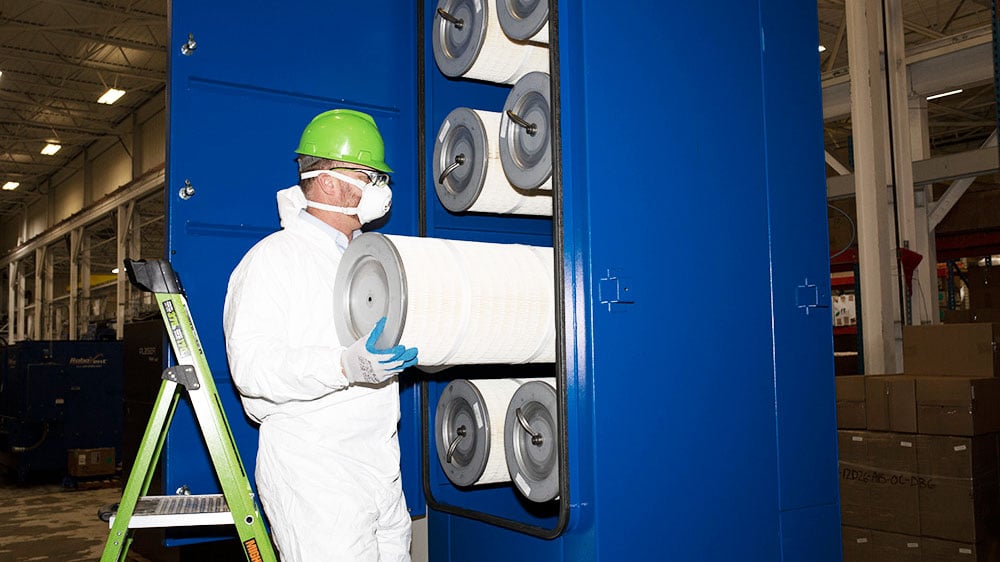How Often Should You Change Dust Collector Filters?

The service life of dust collector cartridge filters can vary widely. Depending on your system and operations, your filters may last as long as a year, or it may need to be changed as often as every three months. There are a few variables that impact the life of your dust collector filter.
- The volume and type of particulates you are collecting. The more particulate you collect, the faster your filters will become loaded; if you are collecting dust or weld fumes from high-speed robotic processes, expect to change filters much more frequently than a shop just collecting fumes from occasional manual work. Wet, oily or greasy particulates will also clog filters more quickly.
- The type of filter media. Make sure your filter media is appropriate for the volume and type of particulate you are collecting. A high-quality filter, such as the PleatLock Dust Collector Cartridge Filter, may cost more up front, but will last much longer, leading to lower maintenance costs over time. The specialized pleats in these filters contain 35% more filter media in the same space as a typical dust collector filter, resulting in longer life and fewer filter changeouts. Wet, oily or greasy particulate may require a specialized filter media to prevent caking and clumping on the surface.
- The air-to-cloth ratio of your system. This refers to how much filter media you have for the volume of air you are moving through your machine. The higher your particulate load, the more filter media per CFM you should have (lower air-to-cloth ratio). If your air-to-cloth ratio is too high for your application, expect to change filters more frequently.
- Dust collector design and maintenance. A filter pulsing system, which uses compressed air to pulse off excess dust on your filters every few seconds, will extend the life of your filters. These systems prevent premature filter loading by pulsing dust on the surface of the filters into a collection bin, preventing them from becoming entrained in the filter media. Vertical filter design will allow excess dust to fall off the filters more effectively. Take care of your filter pulsing system and empty collection trays or bins on a regular basis to maximize the life of your filters
With new equipment, you may need to check your filters frequently for signs of wear and loading until you get a better idea of how often they need to be changed. Our service engineers can help you determine the best filter media and changeout schedule for you based on your equipment and operations.
SUBSCRIBE TO
BLOG UPDATES






